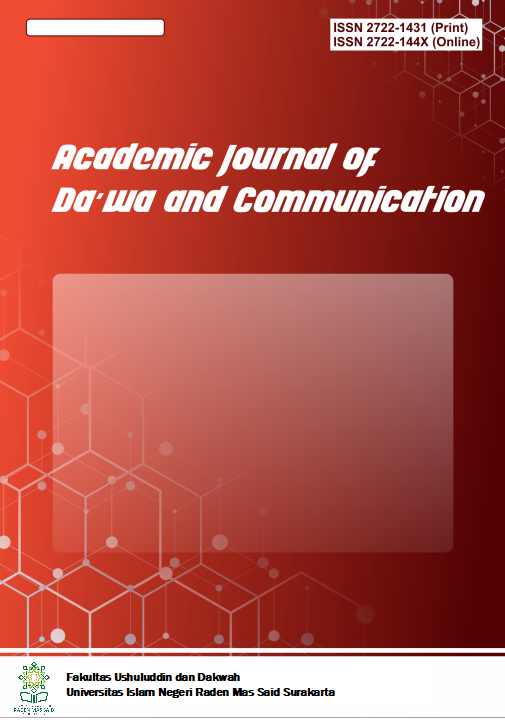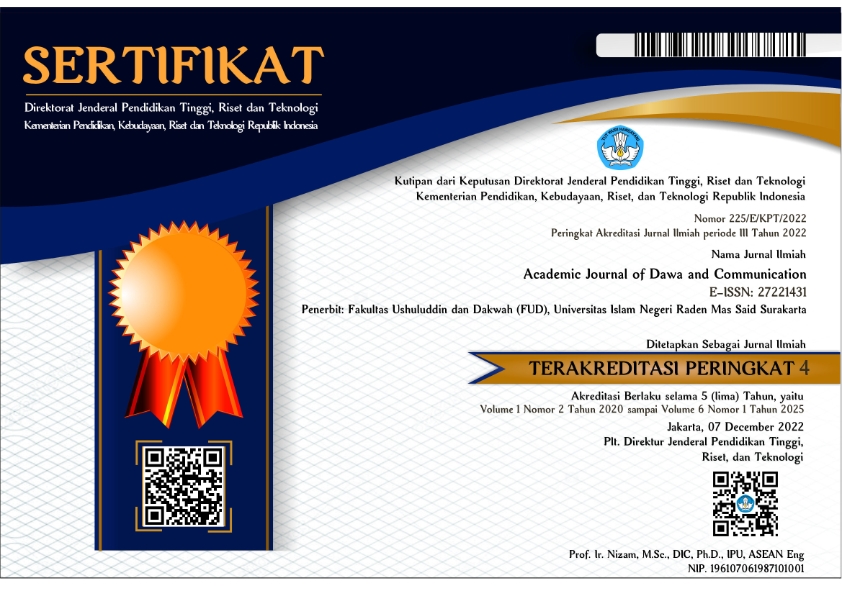Social Media Use For Internal Communication In Kenyan Organizations
DOI:
https://doi.org/10.22515/ajdc.v5i2.9935Keywords:
Social media adoption, Internal communication, Organizational communication, Digital communication tools, Kenyan organizationsAbstract
In today's digital era, the integration of social media into organizational communication practices is essential. The research aimed to assess the extent of social media adoption for internal communication, identify the platforms predominantly used, and evaluate their impact on communication efficacy within organizations Qualitative research methodology was adopted to capture a comprehensive view of social media usage in three organizations. Data were gathered through face-to-face interviews and focus group discussions with 48 participants, purposively sampled, employing thematic analysis to distill the insights. The findings reveal a selective adoption of platforms such as Slack and WhatsApp. While some employees embrace these digital tools, others persist with traditional methods. This contrast highlights reluctance within organizations to fully transition to digital communication tools. The study recommends that organizations strengthen digital literacy programs, establish clear usage policies, and foster an environment that balances innovative digital practices with established communication protocols.
Downloads
References
Ahmad, M. B., Hussain, A., & Ahmad, F. (2022). The use of social media at work place and its influence on the productivity of the employees in the era of COVID-19. SN Business & Economics, 2(10), 156. https://doi.org/10.1007/s43546-022-00335-x
Andrade, C. (2021). The Inconvenient Truth About Convenience and Purposive Samples. Indian Journal of Psychological Medicine, 43(1), 86–88. https://doi.org/10.1177/0253717620977000
Appel, G., Grewal, L., Hadi, R., & Stephen, A. T. (2020). The future of social media in marketing. Journal of the Academy of Marketing Science, 48(1), 79–95. https://doi.org/10.1007/s11747-019-00695-1
Butler, A. E., Copnell, B., & Hall, H. (2018). The development of theoretical sampling in practice. Collegian, 25(5), 561–566. https://doi.org/10.1016/j.colegn.2018.01.002
Chen, X., Ou, C. X., & Davison, R. M. (2022). Internal or external social media? The effects of work-related and social-related use of social media on improving employee performance. Internet Research, 32(3), 680–707. https://doi.org/10.1108/INTR-03-2020-0159
Creswell, J. W. (2014). Research Design: Qualitative, Quantitative and Mixed Methods Approaches. Sage.
Ewing, M., Men, L. R., & O’Neil, J. (2019). Using Social Media to Engage Employees: Insights from Internal Communication Managers. International Journal of Strategic Communication, 13(2), 110–132. https://doi.org/10.1080/1553118X.2019.1575830
Gqamane, Z. (2010). The role of public relations: A case of selected corporate organizations within the greater Durban area [Durban University of Technology]. https://openscholar.dut.ac.za/bitstream/10321/577/3/Gqamane_2010.pdf
Jong, D., Chen, S.-C., Ruangkanjanases, A., & Chang, Y.-H. (2021). The Impact of Social Media Usage on Work Efficiency: The Perspectives of Media Synchronicity and Gratifications. Frontiers in Psychology, 12, 693183. https://doi.org/10.3389/fpsyg.2021.693183
Joshi, R., Pavithra, N., & Singh, C. K. (2022). Internet an Integral Part of Human Life in 21st Century: A Review. Current Journal of Applied Science and Technology, 12–18. https://doi.org/10.9734/cjast/2022/v41i363963
Kapoor, K. K., Tamilmani, K., Rana, N. P., Patil, P., Dwivedi, Y. K., & Nerur, S. (2018). Advances in Social Media Research: Past, Present and Future. Information Systems Frontiers, 20(3), 531–558. https://doi.org/10.1007/s10796-017-9810-y
Laradi, S., Berber, N., Rehman, H. M., Hossain, M. B., Hiew, L.-C., & Illés, C. B. (2023). Unlocking the power of social media marketing: Investigating the role of posting, interaction, and monitoring capabilities in building brand equity. Cogent Business & Management, 10(3), 2273601. https://doi.org/10.1080/23311975.2023.2273601
Lincoln, Y. S., Lynham, S. A., & Guba, E. G. (2011). Paradigmatic controversies, contradictions, and emerging confluences, revisited. In The Sage handbook of qualitative research (4th ed., pp. 99–128). Sage.
McCosker, A. (2017). Social media work: Reshaping organisational communications, extracting digital value. Media International Australia, 163(1), 122–136. https://doi.org/10.1177/1329878X17693702
Naeem, M., Ozuem, W., Howell, K., & Ranfagni, S. (2023). A Step-by-Step Process of Thematic Analysis to Develop a Conceptual Model in Qualitative Research. International Journal of Qualitative Methods, 22, 16094069231205789. https://doi.org/10.1177/16094069231205789
Naik, D. A. (2015). Organizational use of social media: The shift in communication, collaboration and decision-making. James Madison University.
Nayak, B. C., Nayak, G. K., & Jena, D. (2020). Social recognition and employee engagement: The effect of social media in organizations. International Journal of Engineering Business Management, 12, 184797902097510. https://doi.org/10.1177/1847979020975109
Nilasari, B. M., Jasfar, F., & Sri Wahyudi, A. (2019). The Effect of Interactivity, Cost Effectiveness, and Compatibility on the Use of Social Media and its Implications for Organizational Performance. American Research Journal of Business and Management, 5(1). https://doi.org/10.21694/2379-1047.19003
Ogbuji, B., & Papazafeiropoulou, A. (2016). Social Media Strategies for Companies: A Comprehensive Framework. In Y. K. Dwivedi, M. Mäntymäki, M. N. Ravishankar, M. Janssen, M. Clement, E. L. Slade, N. P. Rana, S. Al-Sharhan, & A. C. Simintiras (Eds.), Social Media: The Good, the Bad, and the Ugly (Vol. 9844, pp. 3–14). Springer International Publishing. https://doi.org/10.1007/978-3-319-45234-0_1
Okonkwo, I., & Awad, H. A. (2023). The Role of Social Media in Enhancing Communication and Collaboration in Business. Journal of Digital Marketing and Communication, 3(1), 19–27. https://doi.org/10.53623/jdmc.v3i1.247
Oksa, R., Kaakinen, M., Savela, N., Ellonen, N., & Oksanen, A. (2021). Professional social media usage: Work engagement perspective. New Media & Society, 23(8), 2303–2326. https://doi.org/10.1177/1461444820921938
Ortiz-Ospina, E., & Roser, M. (2024). The rise of social media. Our World in Data. https://ourworldindata.org/rise-of-social-media
Priya, A. (2021). Case Study Methodology of Qualitative Research: Key Attributes and Navigating the Conundrums in Its Application. Sociological Bulletin, 70(1), 94–110. https://doi.org/10.1177/0038022920970318
Ten, Y. (2017). Social media as an internal communication tool in project management practices: Exploring an impact of social media use on employee communication in small and medium-sized companies in Uzbekistan. Umeå universitet.
Trenerry, B., Chng, S., Wang, Y., Suhaila, Z. S., Lim, S. S., Lu, H. Y., & Oh, P. H. (2021). Preparing Workplaces for Digital Transformation: An Integrative Review and Framework of Multi-Level Factors. Frontiers in Psychology, 12, 620766. https://doi.org/10.3389/fpsyg.2021.620766
Vassilakopoulou, P., & Hustad, E. (2023). Bridging Digital Divides: A Literature Review and Research Agenda for Information Systems Research. Information Systems Frontiers, 25(3), 955–969. https://doi.org/10.1007/s10796-020-10096-3
Villeda, M., & McCamey, R. (2019). Use of Social Networking Sites for Recruiting and Selecting in the Hiring Process. International Business Research, 12(3), 66. https://doi.org/10.5539/ibr.v12n3p66
Wamuyu, P. K. (2022). Social Media Consumption Among Kenyans: Trends and Practices. In I. R. Management Association (Ed.), Research Anthology on Usage, Identity, and Impact of Social Media on Society and Culture (pp. 828–860). IGI Global. https://doi.org/10.4018/978-1-6684-6307-9.ch044
Wang, T. (2017). Social identity dimensions and consumer behavior in social media. Asia Pacific Management Review, 22(1), 45–51. https://doi.org/10.1016/j.apmrv.2016.10.003
Downloads
Published
How to Cite
Issue
Section
Citation Check
License

This work is licensed under a Creative Commons Attribution-NonCommercial 4.0 International License.






















